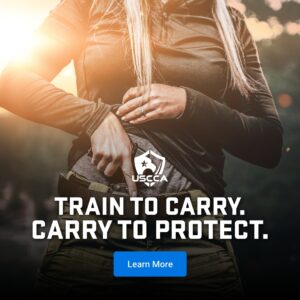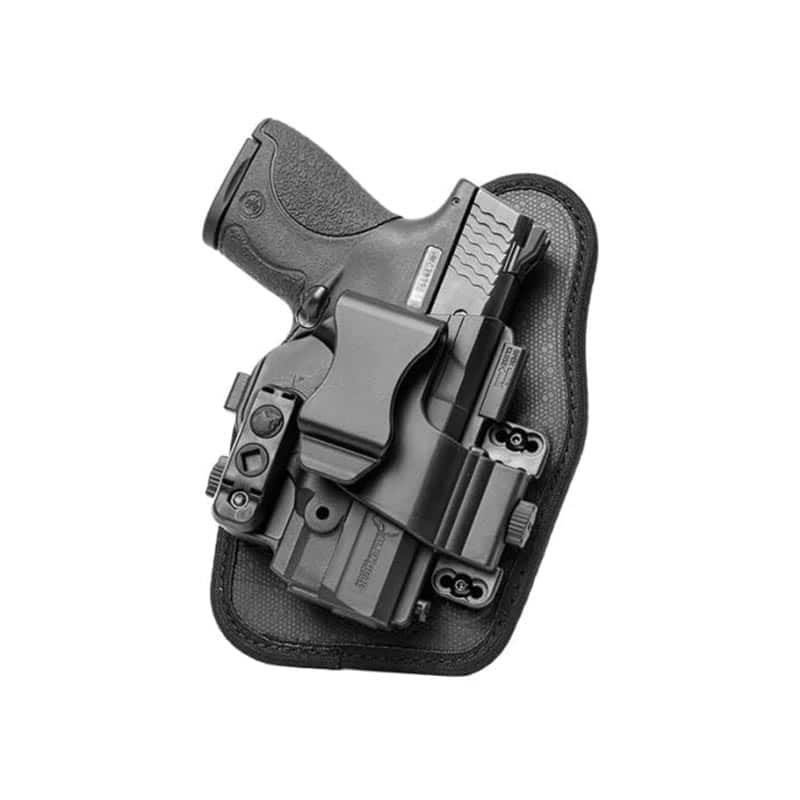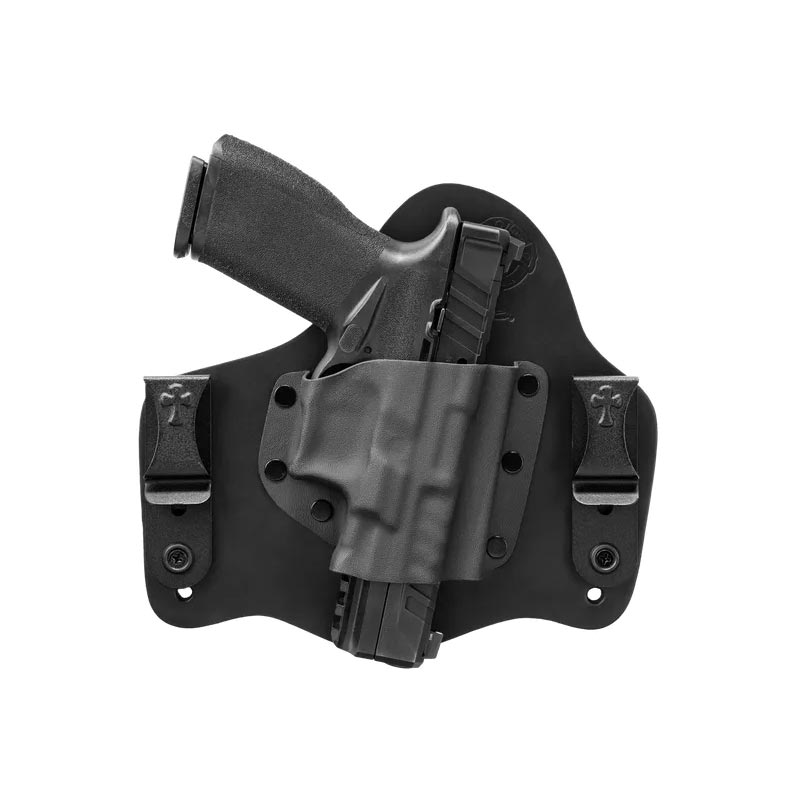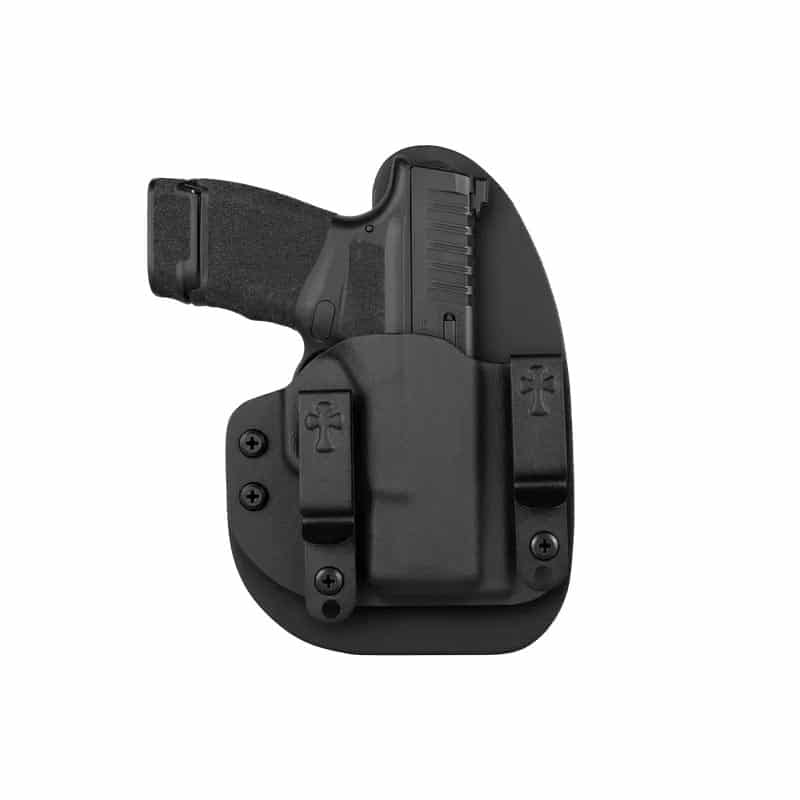Imagine you’re on a quiet evening walk when suddenly the scenario changes dramatically. An unfamiliar figure emerges from the shadows, approaching with an aggressive demeanor. In this instant, your body instinctively reacts: your heart rate skyrockets, pumping adrenaline through your veins. Your palms sweat, your hands tremble slightly. This physiological response – the fight-or-flight reaction – kicks in, sharpening your senses but also potentially leading to tunnel vision and impaired decision-making. In this moment of heightened stress, it’s not just about having a firearm; it’s about your ability to use it effectively. It’s clear that the true test of handling a weapon lies not just in possession but in the ability to stay composed and precise when every second counts
Mastering Fundamental Concealed Carry Skills
The bedrock of effective self-defense lies in your fundamental shooting skills. With solid shooting abilities in your toolkit, you’re set to handle tense situations with confidence and control. Accuracy, speed, and precision aren’t just fancy terms—they’re the core of any solid self-defense plan you’ve got to have down pat.
Achieving Accuracy
Regular practice is crucial for accuracy. Occasional visits to the range won’t suffice. Consistent practice, focusing on proper grip, stance, sight alignment, and smooth trigger squeezing, is key. This repetition is what develops the muscle memory you need to maintain accuracy under stress.
Building Speed
In defensive situations, your reaction speed can be a lifesaver. Mastering the knack for quickly drawing your firearm from concealment, locking onto targets, and shooting swiftly comes from consistent training. Practicing drills that boost your speed in drawing your weapon and placing your shot, as well as alertness gears you up for the intense rhythm of real-world scenarios.
Enhancing Precision
Precision involves controlled, accurate shot placement. It’s about not just hitting the target but doing so accurately under pressure. Practicing dry-fire drills for both drawing and shooting sharpens your skills and boosts shot precision, all without the need for live rounds.
Learning Defensive Tactics When You Carry
Grasping how to use defensive strategies is key when you’re seriously committed to safely packing hidden heat. Carrying a concealed weapon isn’t just about being able to hit your target. You need to have your eyes peeled for potential threats – that’s situational awareness. But it’s not always about pulling the trigger, sometimes you can cool things down without a shot fired – think conflict de-escalation techniques. And don’t forget, there are laws around using deadly force; you’ve got to know them inside out. In the context of self-defense, possessing a firearm implies more than just personal protection; it underscores a profound duty to safeguard not only oneself but also those within your immediate vicinity – an obligation that demands serious consideration and respect. Here’s the bottom line, folks: Enrolling in a self-defense training program isn’t just advisable—it’s absolutely essential. Curious, are you? Well, it arms you with invaluable insights on how to navigate and defuse potential danger zones, helps foster an unshakeable calm when tensions run high and empowers you to make swift yet sound decisions under duress—basically gearing up for whatever life throws at us.
Moreover, defensive tactics training teaches the carrier how to effectively use their environment to their advantage, manage distances between themselves and a potential threat, and utilize non-lethal methods of self-defense when appropriate. Knowing when and how to draw your weapon is just as important as knowing when not to. Often, self-defense classes delve into the mind game aspect too. Within these courses, not only do you acquire the skill to act decisively amidst the tension, but you’re also trained on how to traverse through the psychological aftermath that follows a defensive use of firearms. Mastering these tactics is about more than just enhancing our response to danger. It’s equally about fostering a mindset that strongly prioritizes sidestepping issues and soothing tense situations before they flare up. Ultimately, it boils down to a blend of mental preparedness, knowledge of the law, and tactical skills. This fusion is key for devising a well-rounded plan both for personal safety and responsible gun handling.
The Right Holster Selection Matters
Since the ability to quickly and safely draw your firearm from concealment is a critical skill, selecting the right holster matters a lot. The right holster has to keep your gun both snug and at the ready. You’ve got to be sharp and ready, practicing your draw in all kinds of scenarios—whether you’re darting around or squinting in the dark. Regular training improves the muscle memory necessary for quick and efficient firearm access.
Covers the Trigger
Covering the trigger and trigger guard is a fundamental safety practice for anyone carrying a firearm. Leaving the trigger exposed during daily activities risks unintentional bumps or snags, potentially leading to a negligent discharge and severe injury. Thus, choosing a holster that offers full trigger protection is crucial. Securing your firearm properly cannot be overstated.
Secures the Gun
A holster specifically molded for your firearm ensures it stays securely in place, preventing the weapon from falling out during movements or being difficult to draw due to excessive tightness.
Secures to Your Body
Equally important is ensuring the holster and its attachments securely anchor the firearm to your body, enhancing concealment and comfort.
Properly Conceals the Gun
The choice between inside-the-waistband (IWB) and outside-the-waistband (OWB) holsters largely depends on concealment needs and attire, with IWB options providing a closer body fit for better concealment.
Easy Draw & Re-holster
Consistency in grip and draw is critical; a holster that positions your firearm too low or lacks snugness can hinder your ability to draw quickly and accurately. Furthermore, it’s absolutely key to ensure your firearm slides back into its holster without a hitch or the risk of unintentional firing – this is particularly significant when you’re using holsters crafted from malleable materials prone to distortion.
Comfortable to Wear
Ultimately, comfort and durability in a holster are paramount. A holster that’s tough and fits just right not only cuts down the chance of a screw-up, but also amps up safety and makes it way more effective when you’ve got to carry a hidden gun.
Conclusion: The Responsibility of Mastery
Returning to the scenario we began with, the outcomes depend heavily on your preparedness and proficiency. Mastery in the use of a firearm is a responsibility you must take seriously as a concealed carrier. Mastering your firearm goes beyond personal protection; it’s about safeguarding everyone in the vicinity. Carrying a concealed weapon is a significant responsibility, and achieving mastery of its use is the greatest respect you can pay to that responsibility.













